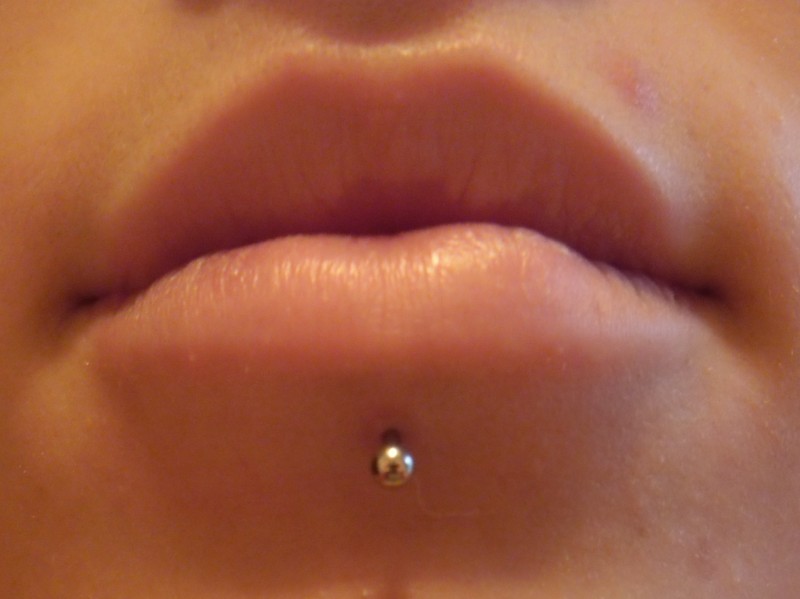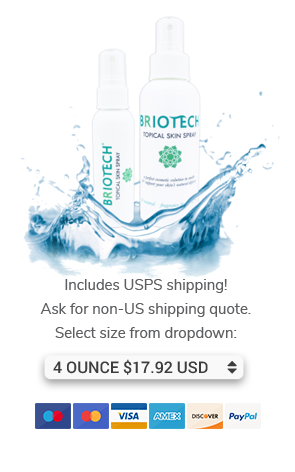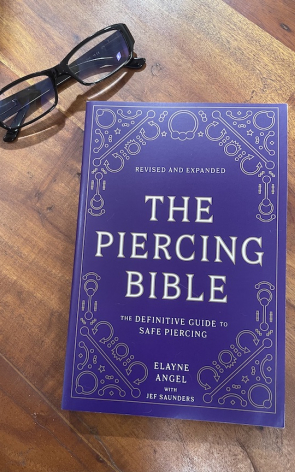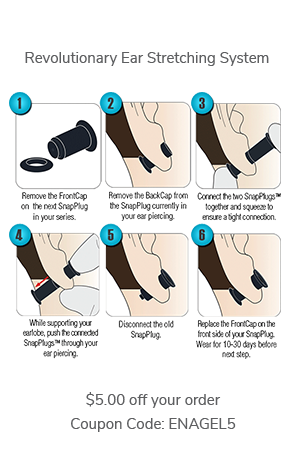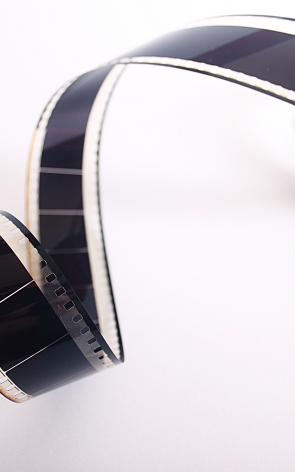I got this message from a piercee who is having trouble with a labret (lip) piercing:
I got my labret pierced on the 3rd of december, and in the last couple days the skin on the inside of my piercing has grown (like a white flap on the bottom of the disc about 1mm tall) that rests next to the disc. i don't know whether it would be growing over it, i have a 10mm long stem which i thought is long enough, but i would still like your opinion
I told her that if she thinks the tissue is growing over the jewelry, she should should see her piercer IMMEDIATELY for a jewelry change! I also explained that I couldn't really evaluate a piercing without seeing it--or at least a photo or two. I requested that she send some clear, close up images, and I received these (below). They do show that the post is long enough so she is not in danger of the jewelry becoming embedded (which is a risk when a piercing is healing if the jewelry is too short).
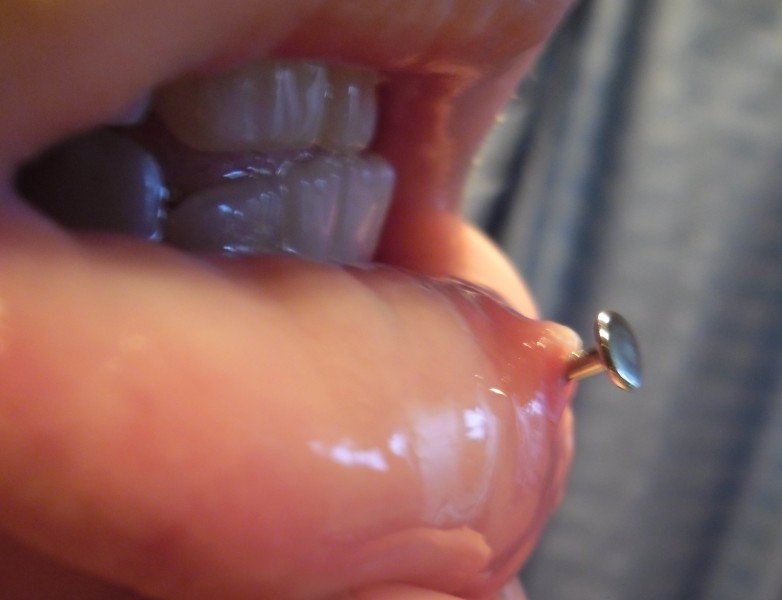
My reply: It appears you have excess scar tissue formation though it doesn't look like you're in any danger of the jewelry becoming embedded, as the post does still have extra length.
When your lip is at rest, does the disk sit perpendicular to the tissue? Or, does it sit at a little bit of an angle (which I suspect)?
Have you returned to your piercer? What did he or she say? Are you following the aftercare as suggested here, including saline soaks?
http://piercingbible.com/piercing-care
Also, do you know what material your jewelry is, and if it is internally threaded (see attachments)? You may need to change to higher quality jewelry to heal.
I provided her with an excerpt from my book, The Piercing Bible--The Definitive Guide to Safe Body Piercing:
Excessive Scarring
The presence of jewelry causes prolonged healing and predisposes the wound to chronic inflammation. Both of these conditions increase the likelihood of excessive scar formation. Keloids and hypertrophic scars are the types of bumps and lumps commonly found on ear cartilage piercings, though other pierced sites also fall victim to these conditions.
A keloid is a very large, dense mound of scar tissue that becomes significantly bigger than your original wound. They can be extremely unsightly, and some grow to shocking dimensions. Unfortunately, once you have formed a keloid, you can seldom fully recover from it and will always have some amount of scar tissue.
A hypertrophic scar is a lumpy scar that sits above the surface of the skin. This is the smaller and far more common growth that forms around a piercing. They are not as big or severe as keloids, respond better to treatment, and are more easily resolved. Hypertrophic scarring sometimes goes away spontaneously, or it may recur and recede in cycles for an extended period of time before improving substantially or disappearing.
Hypertrophic scars are frequently mislabeled as keloids—even by doctors—possibly because both are types of excessive scarring. These problems tend to run in families and occur in about 5 to 15 percent of wounds.
Identifying Hypertrophic Scarring
• Raised fleshy bump surrounding a piercing that stays within the bounds of the injury
• Usually somewhat pink or red in color, at least initially
• Not tender; may itch
• Tends to form during the healing period
• No pus or other drainage
What to Do for Hypertrophic Scarring
Try one of the following methods at a time:
• A simple and inexpensive form of compression therapy (continuous mechanical pressure on a scar to flatten it) using Micropore breathable paper tape. It comes in “flesh tone,” which will not be visible on certain shades of skin. I personally found this to be effective in diminishing a hypertrophic scar that had formed on the back of one of my ear cartilage piercings. This is best used on healed piercings.
– Use scissors to cut a piece of paper tape that will fully cover the entire bump plus a millimeter or so of unaffected tissue. Use a clean hole punch to create a tiny dressing for the smallest of bumps.
– Cut a slit to the center of the bandage so you can place it around your ring or bar; you should be able to completely seal the piercing without covering the jewelry, as a Band-Aid would.
– Wear the tape continuously and change it when necessary. It can be left on during normal bathing.
– Discontinue if you do not see improvement in two to three months.
• Frequent mild saline soaks plus topical application of alcohol, 3 percent hydrogen peroxide, tea tree oil, or Campho-Phenique twice daily for two to three weeks. If you don’t see any improvement, try one of the other options. (The phenol in Campho-Phenique is a caustic substance that destroys tissue, so use it carefully.)
• Over-the-counter alpha hydroxy acid (AHA) cream used according to package instructions. This exfoliates skin and may diminish scar tissue over time. Use only over-the-counter strength (containing less than 10 percent AHAs). This concentration promotes exfoliation but is not potent enough to generate collagen production, which can increase the size of your hypertrophic scar. This product can cause sun sensitivity.
• Daily massage with emu oil or other nonirritating oil or lotion to soften the tissue can be added to the following methods:
– Topical treatment with an over-the-counter corticosteroid cream according to the package instructions.
– Topical application of a chamomile tea bag compress for fifteen minutes, three times a day, for two weeks.
• Some piercees find laser or other medical treatments are effective for hypertrophic scars. See a dermatologist for other treatment options.
Note the tip about aspirin paste, as this is frequently effective for excessive oral scar tissue formation.
Sometimes a bit of orthodontic wax can help. This is from my book:
If you experience soreness inside your mouth as you adjust to the jewelry, dental or orthodontic wax can be applied inside to soften the impact. This harmless wax is inexpensive and can be obtained at drugstores. Problems are generally resolved by wearing smaller or shorter jewelry once healing is complete.
Side note: The word labret (pronounced with a hard t) refers to an ornament worn through a perforation in the lip. It has been in our dictionaries since the nine- teenth century, after explorers interacted with the Tlingit people of Alaska. Labret piercings have been practiced in diverse areas, including Papua New Guinea, Ethiopia, Amazonia, and the northwest coast of the United States.

